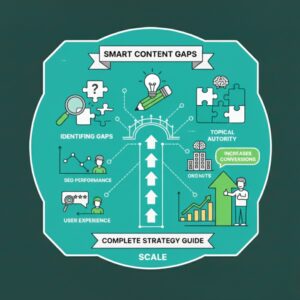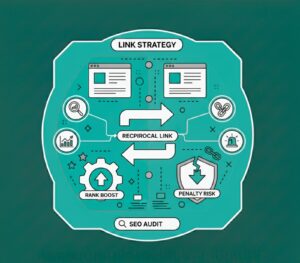Why High-Quality Content Is the Cornerstone of Modern SEO Success in 2025
Blogs | Category
Written By: Lauren Davison
Introduction
SEO has evolved. It’s no longer just about keywords or backlinks to catch up in the ranking. In 2025, Google will reward content that truly adds value and helps visitors. High-quality content doesn’t need any form of additional tricks. They can just attract clicks and build trust with visitors.
Modern SEO strategy in 2025 revolves around human-first experiences. Now, they are not just about algorithms and keywords. Businesses that produce original, reliable, and insightful information can earn stronger rankings. Also, it helps them to earn more loyal audiences. In simpler terms, content that helps people will always help your SEO.
Table of Contents
Understanding What “High-Quality Content” Really Means Today
The definition of quality content has changed drastically. A decade ago, stuffing pages with keywords or chasing backlinks was known as a trick. And they could still push a site up in Google’s ranks. But it became outdated and flawed, which made that era come to an end. Today, high-quality content is also one of the key vital points to be focused on. It means creating an authentic, informative, and focused piece for the reader.
Google’s E-E-A-T framework
Experience, Expertise, Authoritativeness, and Trustworthiness, aka EEAT. Content that meets these standards comes under the real human knowledge and credibility. And modern SEO is no longer a game of system manipulation, which has become essential. It’s a reflection of how well your content serves user intent.
The Shift from SEO-First to User-First Content
Search engines now evaluate content through the eyes of the reader. If your article informs, solves a problem, or teaches something useful, it earns organic trust. The focus has turned from keyword density to human connection — making sure every paragraph has purpose and empathy.
How Google’s Algorithms Now Evaluate Content Depth and Credibility
Today’s algorithms are smarter with the support of AI. They can assess how deeply your topic is covered. And also verify whether your sources are credible or not. That’s how consistently the content aligns with expert insights. Google’s systems can even detect if a piece feels rushed or repetitive. Content depth, tone, and structure all help algorithms decide who deserves the top spot.
The Direct Connection Between Content Quality and SEO Performance
If you want a good SEO performance, then creating quality content becomes essential. When readers stay longer on a page or engage with the text, it indicates that your content is useful to visitors. And Google interprets it as a sign of value to the audience and tries to push forward. This takes your website towards better rankings and more organic traffic.
A well-crafted article improves dwell time and lowers bounce rates. Also, giving backlinks means complete article content. These are the key factors for the ranking. Google wants to display results that users genuinely appreciate.
Why Google Prefers Content That Demonstrates Real Expertise
When the content includes first-hand knowledge or original perspectives, it goes well with visitors. And that’s the reason why professionals often rank higher than generalist blogs. Demonstrating expertise can help users to place trust in your brand. Also, Google rewards that trust with visibility.
The Role of Engagement Metrics in SEO Ranking
Metrics like time on page, scroll depth, and interaction rates tell Google whether a piece deserves its ranking. If people leave within seconds, it signals low value. But when they read, click, or share, the system knows your content is doing its job.
Key Elements That Make Content High Quality
Every strong SEO piece follows certain fundamentals. These elements separate average blogs from content that earns top results.
- Originality and Uniqueness: Make sure to avoid duplication and thin content. Each piece of content should bring a fresh voice or insight.
- Relevance and Intent Match: You need to write for what users actually search and expect. This makes your content most favourable and also gives them a real answer.
- Depth and Accuracy: Have backup claims with your data in the content. You can also check out case studies or any credible references.
- Readability and Structure: Use clear headings, short paragraphs, and visuals in your content. This guide helps the visitor’s eye to understand the information easily.
- SEO Optimisation: Blend keywords naturally, link related pages, and keep metadata clean.
Balancing SEO Keywords and Natural Readability
Keywords still matter, but forcing them never works. The best writers blend them subtly, letting the language flow. A natural rhythm reads better, feels human, and keeps both search engines and readers happy.
Why Visuals and Formatting Improve User Experience
Visuals break the monotone of your content and boost the retention value. Infographics, images, and bullet points can make reading easier. A well-structured and visually appealing article can keep people engaged longer. Also, it is one of Google’s strongest ranking signals
Building an SEO Strategy Around Quality Content
The smartest SEO strategies in 2025 are those that start with content quality, not just relying on tricks. Keyword research, content mapping, and topic clustering are vital to your content. They all revolve around providing consistent, meaningful experiences to readers.
Aligning every post with your business goals – awareness, conversion, or retention. Instead of publishing for volume, brands now win by publishing with purpose.
Mapping Content to Every Stage of the Buyer Journey
Create content that meets readers where they are.
- Awareness: Educational blogs and guides.
- Consideration: Case studies or comparisons.
- Decision: Testimonials, product demos, or FAQs.
This structure keeps readers engaged and moving closer to conversion.
How Topical Authority Builds Long-Term SEO Strength
Topic clustering builds authority. When your site covers related themes in depth, Google sees it as a reliable resource. Over time, that trust compounds — improving rankings across multiple keywords without needing shortcuts.
Common Mistakes That Weaken Content Quality
Many businesses are falling into the traps which make their SEO efforts wasteful. They are chasing shortcuts instead of making quality content. This hurts both the credibility and the rankings of your content.
Common issues include:
- Writing for keywords instead of people.
- Ignoring updates or leaving content outdated.
- Poor structure or dense blocks of text.
- Publishing unchecked facts or unedited AI content.
Why Outdated Content Can Harm Rankings
Google re-evaluates every old page constantly. If your content hasn’t been refreshed, then it may fall behind newer and more relevant results. Updating them regularly gives a signal that your site stays current and reliable.
The Risk of Relying on AI Content Without Human Editing
AI tools can help you speed up your writing. Still, an unedited output from AI often lacks nuance or authenticity. Human editors can bring emotion and rhythm to the content. These things can’t be replicated by algorithms. So always refine your content before publishing.
Measuring the Impact of High-Quality Content on SEO
A good SEO depends on how you track the performance of your keywords and content. Tools like Google Search Console, GA4, and Ahrefs can help you look over your content performance.
Key Metrics That Prove Your Content Strategy Is Working
When your content gets more clicks and longer visits, it has value to reach more. They can get back the readers, which can impact your ranking. High-quality content consistently brings compounding gains, not just short spikes for certain periods.
Using Data Insights to Refine Content Quality Over Time
Before starting the content, make sure to analyse your topic. Also, check what attracts engagement, what headlines convert, and how readers behave. Use that data to guide your next steps. SEO success is never static — it evolves with each new insight.
Repurpose and Refresh, Don’t Just Replace
In 2025, top-performing brands know that consistency is what can beat quantity. Make sure to repurpose your best articles into new formats. Such as videos, infographics, or podcasts. This helps you to refresh old content with new data. Staying relevant is better than starting from scratch.
Conclusion
Modern SEO thrives on authenticity and depth of content. As AI started to support your search engines, they became smarter to analyse better. This helps readers to get more selective options. Shortcuts don’t work anymore.

Written by - Lauren Davison
Introducing Lauren – one of our content writers who has a flair for SEO and creative strategy!
With a Master’s Degree in Creative Writing, Lauren has niched down into SEO and content writing.
Outside of work, she loves watching the darts, reading and the pub on the weekend.
Want some more?
Latest Insights & News

Revolutionising Marketing: The Rise of Situational Content Strategies
Situational content strategies involve tailoring content to specific moments, contexts, or audience behaviours. By aligning content with real-time trends, seasonal needs, and user intent, brands can increase relevance, improve engagement, and strengthen SEO performance.

Smart Ways to Identify and Fill Content Gaps Fast: A Complete Strategy Guide
Content gaps refer to missing information, unanswered questions, or underserved topics in your existing content. Identifying these gaps helps you create targeted, high-value pages that improve search visibility, satisfy user intent, and outperform competitors.

Reciprocal Links in SEO: Do They Still Boost Rankings or Risk Penalties?
For the keyword “reciprocal links SEO,” focus on explaining how reciprocal linking works today. Reciprocal links are not harmful by default, but Google can flag excessive or manipulative link exchanges. To stay safe, only exchange links when they are contextually relevant, natural, and valuable to users.




